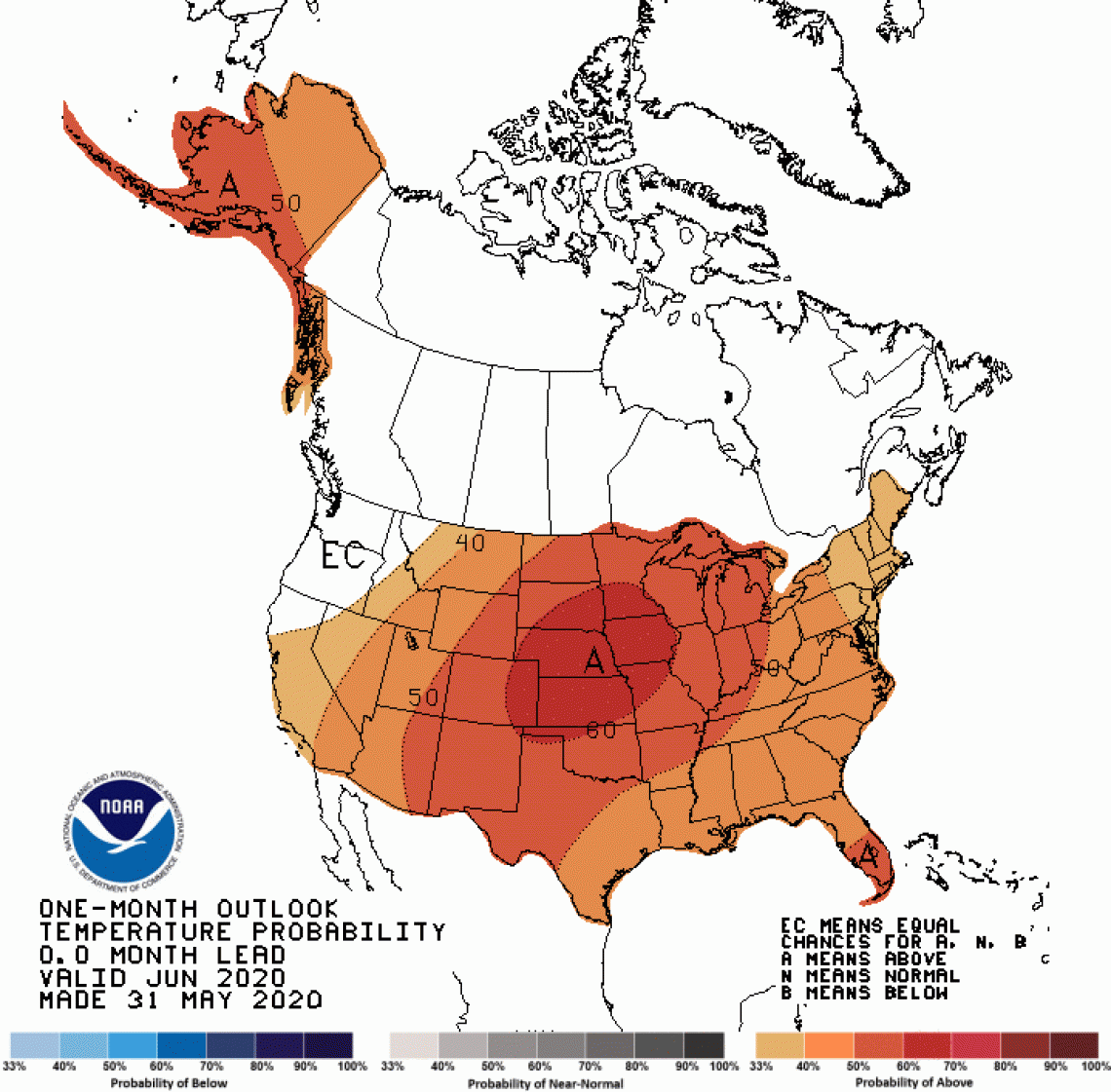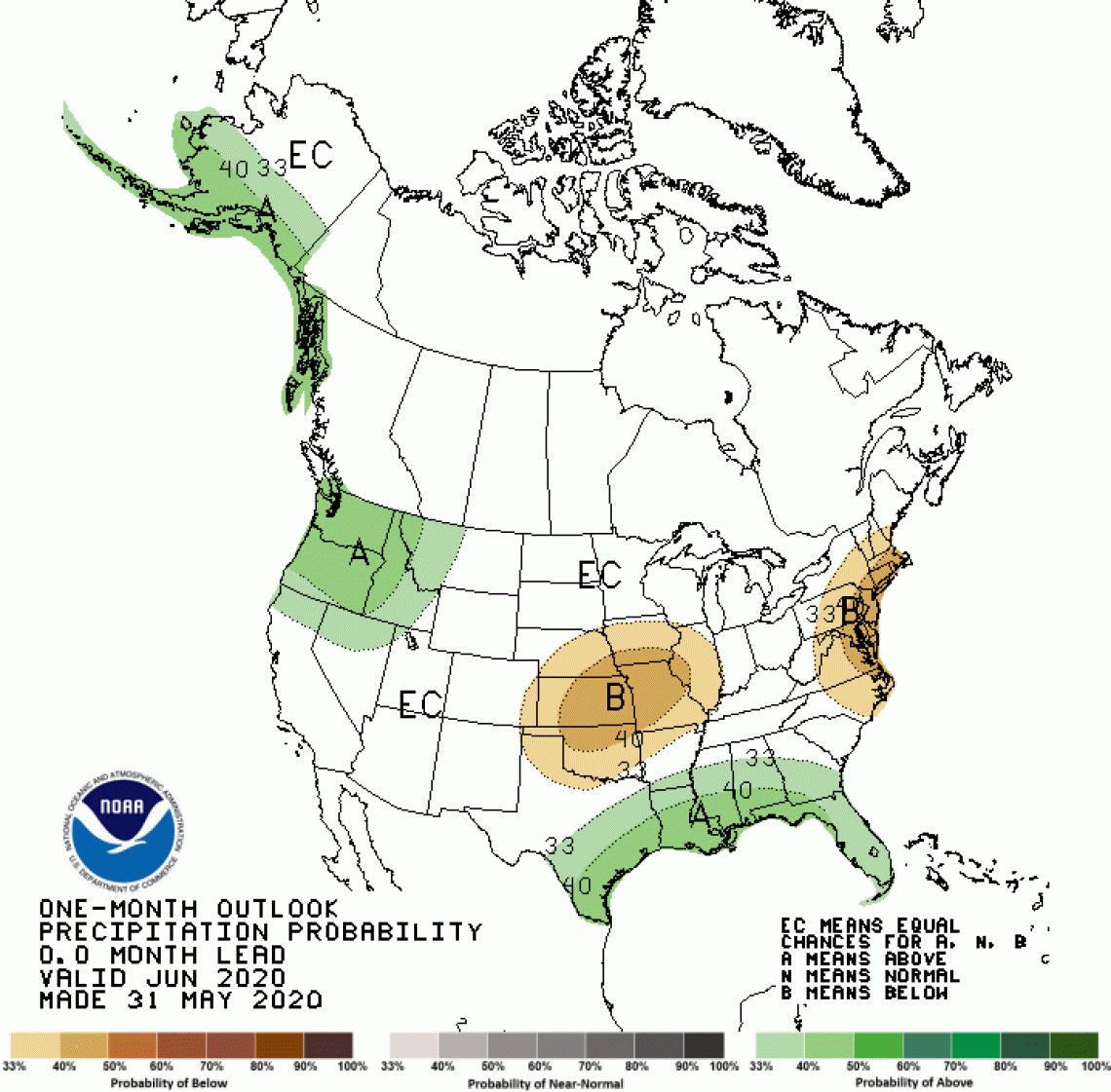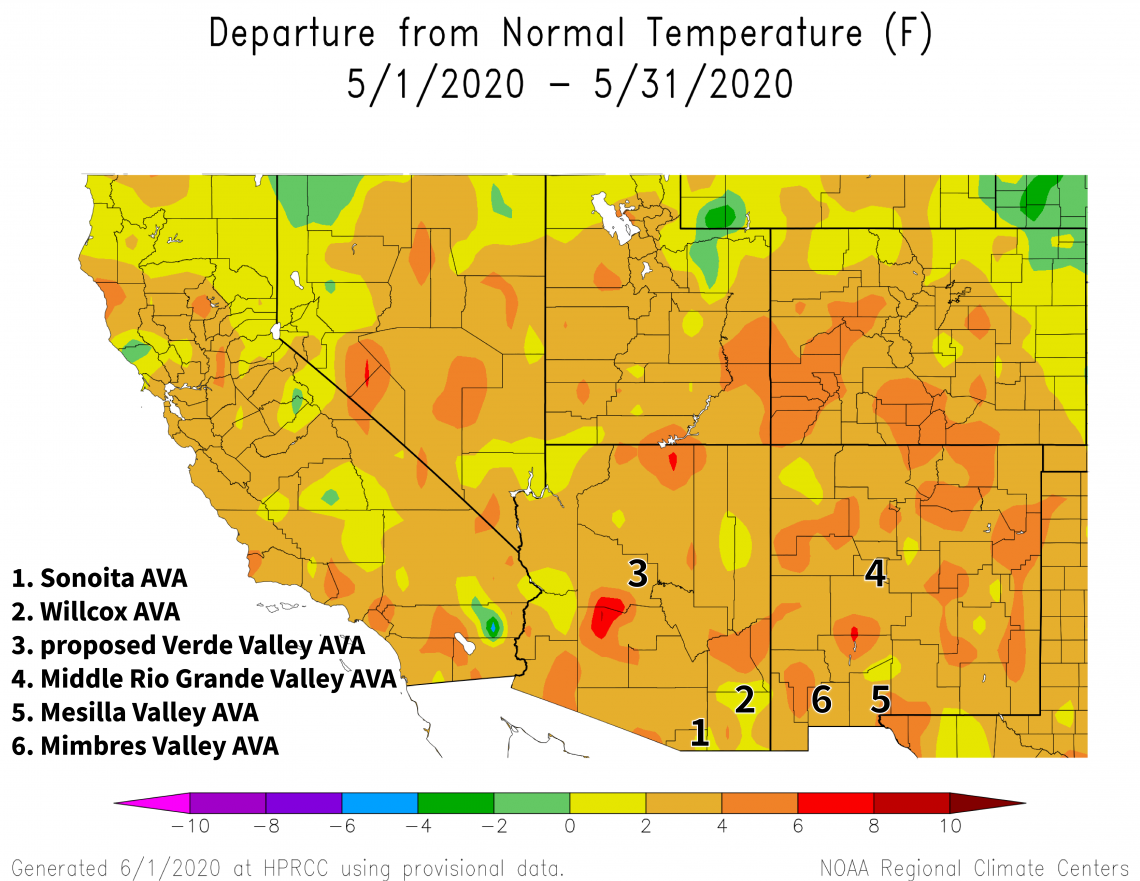Climate Viticulture Newsletter - 2020 June
< Back to Climate Viticulture Newsletter
Hello, everyone!
This is the 2020 June issue of the Climate Viticulture Newsletter – a quick look at some timely climate topics relevant to winegrape growing in Arizona and New Mexico.
A Recap of May Temperature and Precipitation
Average temperatures for the month were 2°F to 6°F above the 1981-2010 normal for almost all of Arizona and New Mexico (orange areas on map). Part of the reason why is that the region experienced its second and third rounds of record-level heat for 2020. Such warmth this time of year may slow vines down in relatively warmer winegrape growing areas while advancing growth stages in relatively cooler ones. More on this below. May 2020 temperatures probably could not have been more different from those last year.
Monthly precipitation totals were less than 50% of normal for almost the entire region (red areas on map). A few locations in northern Arizona and along the Arizona-New Mexico border received above-average amounts (green, blue, and purple areas on map). With warm and dry conditions in May, irrigating to maintain soil moisture was likely a key issue for many and a big change from last year when above-normal precipitation amounts were widespread in Arizona and northern New Mexico.
The Outlook for June Temperature and Precipitation
There is a slight to moderate increase in chances for above-average temperatures as one goes from west to east across the region this month (orange areas on map). Like May, high temperatures in June can mean excessive heat for vines and negative impacts for a vineyard. In June 2019, temperatures were near normal for the region.
2020-jun-temp-outlook-noaa-cpc.gif

Equal chances for above-, near-, or below-average precipitation totals exist for the entire region (white area on map). June is a relatively dry month, except perhaps for the eastern plains of New Mexico. The relatively hot and dry conditions we typically experience this time of year require soil moisture, vine nutrition, and vine canopy to be in top shape, so the stage remains set for a successful rest of the growing season. Last year, precipitation in June was well below normal for much of the region.
2020-jun-prcp-outlook-noaa-cpc.gif

'Tis the (Wildland Fire) Season
Until the monsoon arrives, it is peak wildland fire season across the region. There is an above-normal potential this month for significant wildland fires across almost all of Arizona and much of northern New Mexico (red area on map). Otherwise, the potential in the region is near normal (white area on map). Displacement of insects from a nearby burn area to a vineyard and smoke taint are two possible impacts from wildland fire. Fortunately, the latter is a relatively low risk for the region as we are not yet in the ripening and harvest period when fruit has a higher potential for smoke uptake.
2020-jun-month1-fire-outlook.png

Heat Accumulation So Far This Year
At the Arizona Meteorological (AZMET) Network Willcox Bench station, temperatures last month lifted cumulative growing degree days above the level they were at this time last year (pink and purple lines on graph). Based on growing-degree-day information from the National Phenology Network, this also appears to be the case for other locations in the Willcox, Sonoita, and proposed Verde Valley AVAs in Arizona, as well as the Mesilla Valley, Mimbres Valley, and Middle Rio Grande Valley AVAs in New Mexico. Vine growth stages may be further along now than at the start of June 2019. Please let us know if this is the case in your vineyard.
azmet-willcox-bench-gdds-cvn-202006.png

More on Excessive Heat
Afternoon temperatures above 95°F were another part of the temperature story at the AZMET Willcox Bench station last month. Measurements show two hours above this threshold on May 6th, one hour on the 27th, five hours on the 28th and 30th, and three hours on the 31st (dark orange dots on graph). Vine photosynthesis and growth slow down and eventually stop as temperatures rise to and above this level. Timing of excessive heat last month also may have negatively impacted fruit set in relatively warmer winegrape growing areas, as temperatures this high can affect flowering and reduce pollen viability.1 Please let us know if any such impacts occurred in your vineyard. The fourth round of record-level heat in 2020 is in store for early June.
azmet-willcox-bench-hourly-temps-cvn-202006.png

For those of you in southeastern Arizona, Cooperative Extension manages an email listserv in coordination with the Tucson forecast office of the National Weather Service to provide information in the days leading up to agriculturally important events, like record-high temperatures and critical fire weather conditions. Please contact us if you'd like to sign up.
Please feel free to give us feedback on this issue of the Climate Viticulture Newsletter, suggestions on what to include more or less often, and ideas for new topics.
Did someone forward you this newsletter? Please contact us to subscribe.
Have a wonderful June!
With support from:






